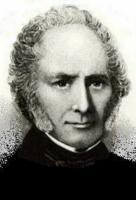| www.tmatlantic.com
Test & Soldering Equipment On-line Store |
|
D.E.V.I.C.E. (Wiki)Calculators Services |
|||||
Filter by first letter
|
Sturgeon, William
William Sturgeon was born on May 22, 1783 in Whittington, near Carnforth, Lancashire. He was an English physicist and inventor who made the first electromagnets, and invented the first practical British electric motor. Sturgeon joined the army in 1802 and taught himself mathematics and physics. In 1824 he became lecturer in Science and Philosophy at the East India Company's Military Seminary at Addiscombe, Surrey, and in the following year he exhibited his first electromagnet. He displayed its power by lifting nine pounds with a seven-ounce piece of iron wrapped with wire through which a current from a single battery was sent. In 1832 he was appointed to the lecturing staff of the Adelaide Gallery of Practical Science in London, where he first demonstrated the DC electric motor incorporating a commutator. In 1836 he established the journal Annals of Electricity, Magnetism and Chemistry, and in the same year he invented a galvanometer. Citing: Wikipedia.org |
Measurement History Events
|
Site mapPrivacy policyTerms of Use & Store PoliciesHow to BuyShippingPayment




|


























